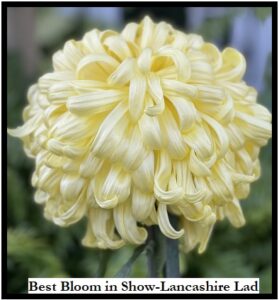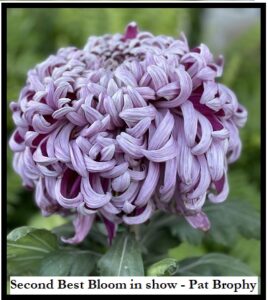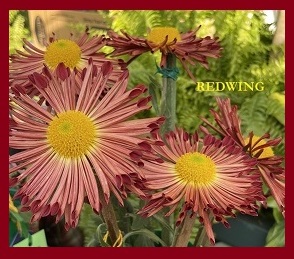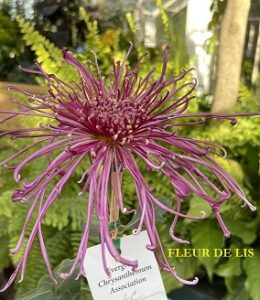January To Do List –
1. Get your stools growing and producing shoots for cuttings. You should have several already producing good shoots for January cuttings
2. Clean up your cutting beds, check temperature sensors overhead lights etc. See Dec. 2020 news letter for details.
3. Lay out your growing plans for the year- What verities and how many you plan to grow. We suggest breaking it down to 3 or four sections i.e. -Large and Mediums (#1s & #2s) -Incurves (#3s & #13s ) -Late Decoratives & Fantasies -Early English and Garden Varieties and -Any special categories you may be growing
4.Plan your pinch dates and starting dates
5. Start the cuttings per your plan; refer to previous notices or your ECA Novice Handbook
6. Collect material you will need when transferring cuttings to next stage; i.e. 21/2 inch cross bottom cubes– M&R mix, or other soilless growing mix, plant labels, growth hormone, B-9 stem growth retardant.
Cultural notes
1. Taking cuttings:
There are three methods that ECA club members use to start cuttings:
a) the first method employs the old standard cutting bed where cuttings are placed in rows in the starting media.
The basic cutting bed growing media being peat moss and sand or our standard growing M&R mix. A basic starting media recipe includes 60% ProEarth#2 and 40% Green Mountain sharp white sand. The sharp white sand helps produce many more roots as the sharp edges penetrate the cambion layer and new roots develop where the layer was broken
b) the second method employs starting cuttings directly in 2 1/2 inch cross bottom cubes. Growing media is the same as above
c) the third method employs earth pots. The Earth pots come in trays of 72 starting modules containing the required soilless ingredients. The cuttings are inserted directly into each module. A cutting bed not required per se; but you still, but you still need to provide controlled under the pot heat, overhead protection (Covers), overhead lighting and frequent overhead spraying. Mark Ross is the point person for ordering the Earth pots and you need to order them a month in advance.
All methods have proven to produce excellent rooted cuttings. The Earth Pots are liked by several growers because they allow a denser starting flat. Downsides include additional costs and the need for frequent spraying. The cutting bed seems to have an advantage with the white Sand enabling more roots per cutting and the ability to get a good look at the roots when they are taken from the bed. Of course the starting media or the under flat temperature must be controlled (65-69 DEG) by heating heating elements such as heat pads, heat coils, heated room etc.
2. Starting dates: There is always varying opinion for different starting dates. Let’s try to put some logic into the question.
First we must recognize that different varieties require different starting dates to provide the best chance of getting a full flowered bloom ready for our show date which is scheduled for Oct 28th -30th this year. For most of the year we must concentrate primarily on root development. In line with that position we recommend that the final potting, (8″ or 9″ pots) should be completed between the 1st and 15th of June. This allows sufficient time to develop strong fully root bound roots by the time we expect the buds to appear.
A basic tenant for pot grown plants is that the plants seldom bud out until they become root bound. If you are still potting-on into July you don’t have sufficient time to develop roots before you need buds to appear. The result is often late and anemic blooms. Pushing them along with additional fertilizer can’t really save them. This concept is mostly independent of the planned stopping dates.
All that having been said there is still a lot of latitude in selecting your starting dates; including tardiness in getting your stools growing early enough to take healthy cuttings . You each will have to decide when to take your cuttings. By keeping good records of your plant start dates, potting dates, pinch dates and bloom results you will be able to hone in on the time frames that work best for you.
To give you some ideas below is a list of generalized starting dates.
– Late Dec & early to mid January,
Mount Rainer, Elsie Prosser James Bryant, Keith Luxford, All Fairweathers, Most Fantasies (Spiders, quills and spoons). King George, plus anything you plan to grow for specimen plants (10 or more blooms).
-Late Jan. Connie Mathew, Seychelles, Dukes, Jessie Habgood
– February, Lundys, Harry Gees (all), Jane Sharpe, Ralph Lamberts, Athabasca,
-Late Feb. to early march, Lots of #4s & #5s plus garden varieties.
3. Use of B-Nine to control plant Height.
We have been recommending B-Nine to control the height of our plants. In general we recommend the first application be made the first time you pot up to 4 inch pots. However, there several varieties that are generally quite short, and B-Nine is not beneficial. Do not use B-Nine on any cultivars that tend to have short stems including – Fairweathers, Alexis, West Bromwich and King George.




